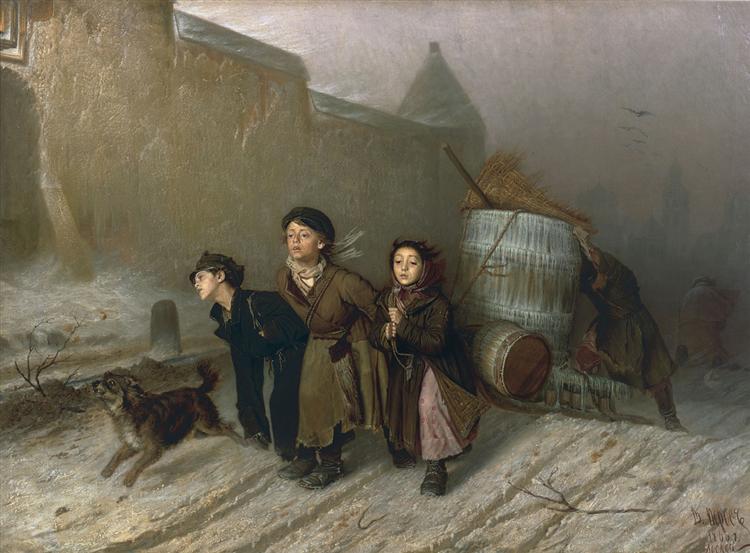Perov’s painting “The arrival of the stanovoy for the investigation, for all its naivety, touched“ far and deep ”topical modern problems and therefore received a wide public response.
The painting depicts the trial of a village boy, most likely a woodcutter. He was just brought into the hut, and a clerk with a tied cheek is already writing down his testimony, but the verdict is clear and so – a peasant at the door is preparing a cane, a peasant girl is displeased by his side. The Stanovoy is offered vodka and a snack, and by his chair is a basket of eggs – obviously a gift to a formidable judge, which should characterize him as a bribe-taker. The figure of a guilty peasant in a snow-white, albeit torn shirt, was painted from Illarion Pryanishnikov, Perov’s friend at the Moscow School of Painting. This figure least of all suited the critics – they saw in her a sentimental idealization, which was in contradiction with the prosaism of the depicted everyday case. The pleading gesture of the defendant is all the more touching because his hands are tied with a thin string, which costs nothing to break, and the headman holds his elbow loosely and even seemingly tenderly, so that the meekness of a young man who does not even have the will to make an energetic movement really provokes noble indignation at the “downtrodden” of the peasantry and reflections on the topic “will you wake up full of strength?” (Nekrasov).
The painting “The arrival of the police officer for the investigation” gave Stasov a reason to utter the famous phrase that Perov became the direct heir of Pavel Fedotov and “lifted the brush that fell out of Fedotov’s hands at the very place where he dropped it.” In Stasov’s interpretation, Fedotov appears as an angry denouncer, the author, first of all, of two paintings “with a tendency” – “The Fresh Cavalier” and “The Courtship of a Major”. It was precisely the accusatory idea that Stasov saw in Perov’s painting The Arrival of the Stanovoy. Stasov was not at all embarrassed by the fact that this was a student’s work, from the point of view of pictorial skill, completely incomparable with the works of an outstanding artist such as Fedotov, and he found here unusually strongly captured types and characters. Such an exaggerated characterization of a fairly modest work means only one thing: the critic saw here what he wanted to see, and, therefore, it was enough to designate some urgent problem in the easel picture for the picture to acquire dignity and value. Perov received praise for a well-found plot, received a Big Silver Medal from the Academy of Arts.
Year of painting: 1857.
The size of the painting: 38 x 43 cm.
Material: canvas.
Writing technique: oil.
Genre: genre painting.
Style: realism.
Gallery: State Tretyakov Gallery, Moscow, Russia.



